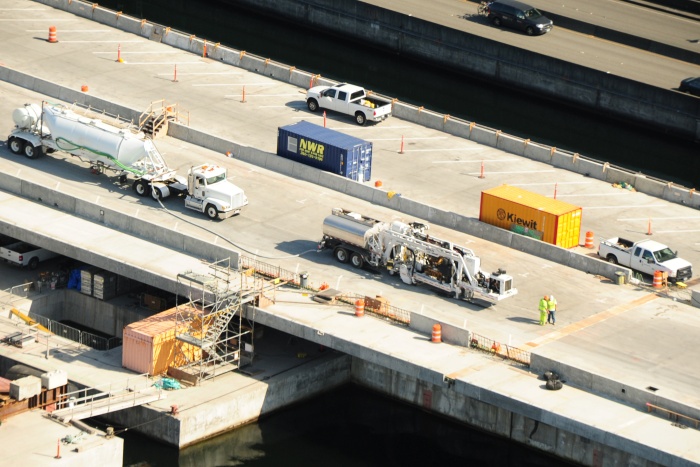
The International Grooving & Grinding Association (IGGA) is a non-profit trade association that began in 1972. The group is an industry-leading technical resource in the development and marketing of optimized pavement surfaces and pavement preservation around the world. Recently, the IGGA announced the release of a tip sheet, “Tips for Diamond Grinding Bridge Decks: Avoid These Common Mistakes Before Grinding the Bridge Surface.” The document is an educational resource for contractors that explains how to avoid damage to bridge joints during construction.
The document comes at a time when road owners are increasingly specifying diamond grinding to improve ride quality, friction and drainage capabilities of new bridge deck surfaces. Because diamond grinding involves removing a thin layer of concrete from the road surface, and because diamond grinding machines have long wheelbases and need to transition slowly into grade changes, the IGGA, in its capacity as a technical resource for the roadbuilding industry, is offering the tip sheet as guidance for accommodating the grinding process.
Expansion joints
Expansion joints are placed at intervals along bridge decks and at the end of a bridge where it meets the roadway. Builders must protect the joints themselves, and bridge components under the joints from damage during construction and surfacing operations. Failure to do so can result in financial penalties and repair costs for contractors performing the work. Grade control (i.e., creating even surfaces on either side of the joint), installing proper concrete thickness to accommodate removal of a layer during diamond grinding, and placing steel components at a proper depth within the concrete are examples of quality control measures that builders should take these measures under advisement during construction.
The tip sheet details all of these recommendations, and others. Following the recommendations will allow contractors to reduce the risk of damage to vital bridge components—and to avoid penalties—while providing the driving public with smooth, safe and quiet bridge deck riding surfaces.
“With the increased focus on rideability and the desire to eliminate the ‘bump at the bridge,’ many contractors are turning to diamond grinding to deliver that smoothness. The guidance provided within the tip sheet will help them achieve their goals with confidence and minimum risk of damage to the structure,” said John Roberts, executive director, International Grooving & Grinding Association.
About the IGGA
The International Grooving & Grinding Association (IGGA) is a non-profit trade association founded in 1972 by a group of dedicated industry professionals committed to the development of the diamond grinding and grooving process for surfaces constructed with Portland cement concrete and asphalt. In 1995, the IGGA joined in affiliation with the American Concrete Pavement Association (ACPA). At that point, they formed the IGGA/ACPA Concrete Pavement Preservation Partnership (IGGA/ACPA CP3). Today this partnership serves as the technical resource and industry leader in the marketing of optimized pavement surfaces, concrete pavement restoration and pavement preservation around the world. The mission of the IGGA is to serve as the leading technical and promotional resource for the acceptance and proper use of diamond grinding and grooving as well as PCC preservation and restoration. For more information, visit www.igga.net












